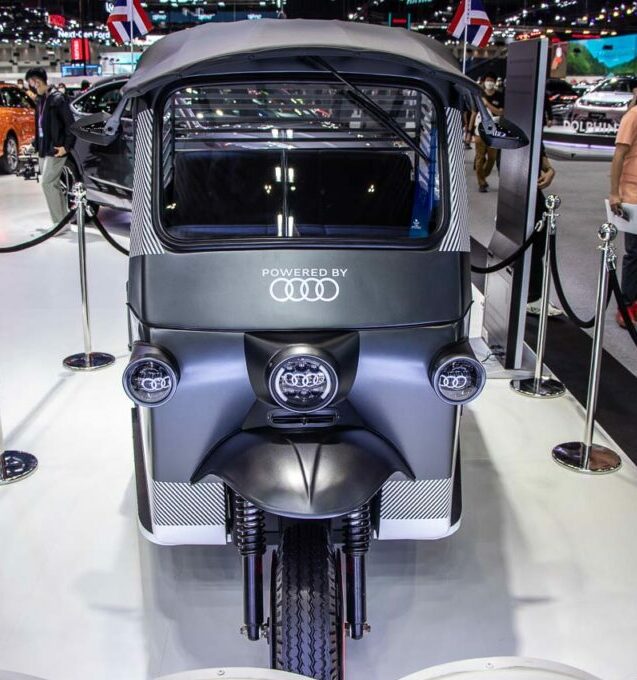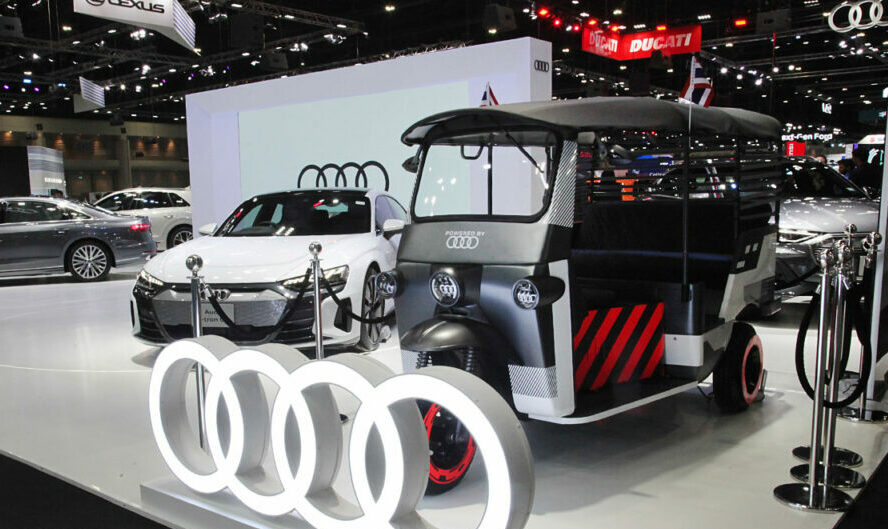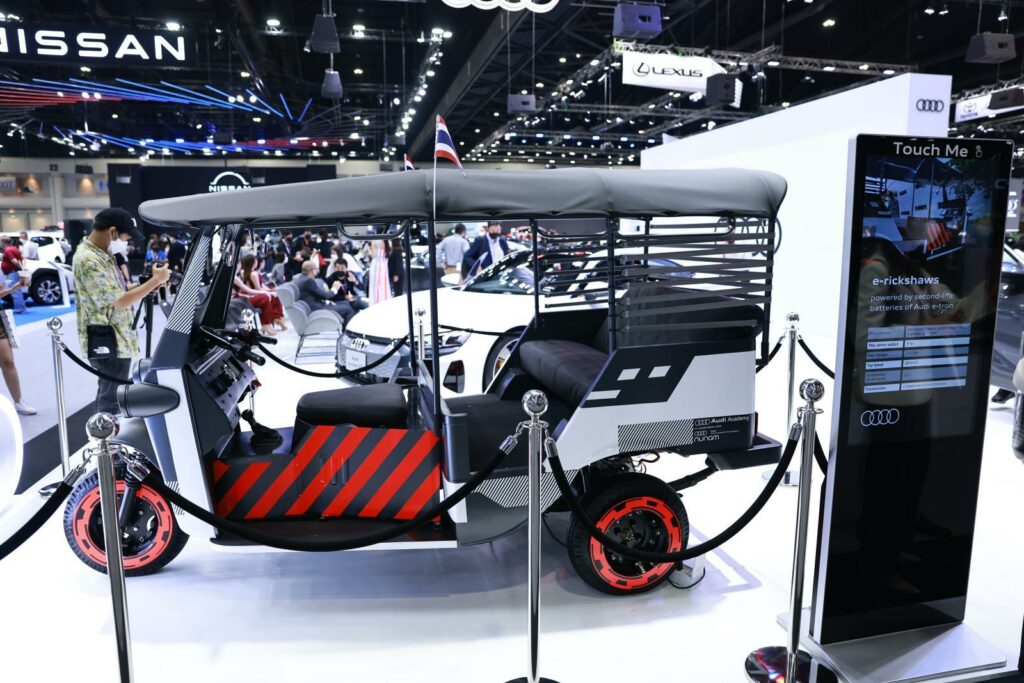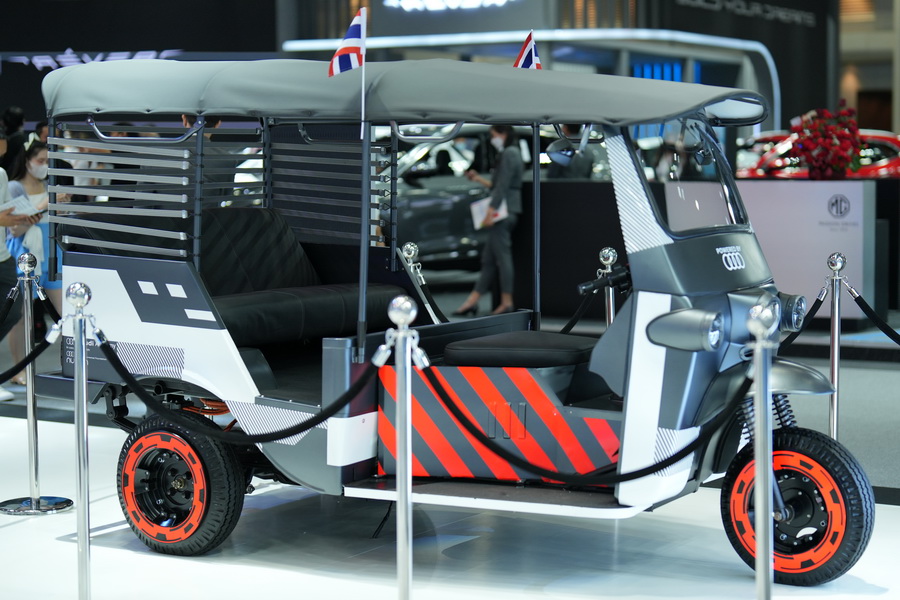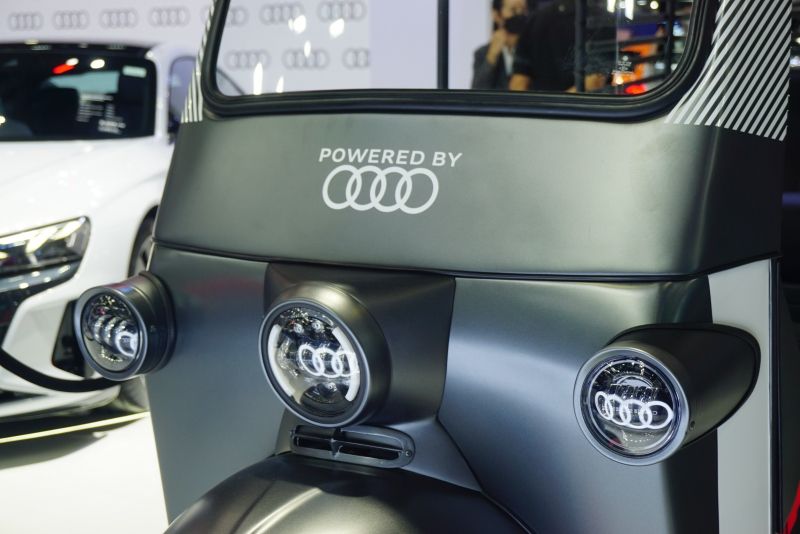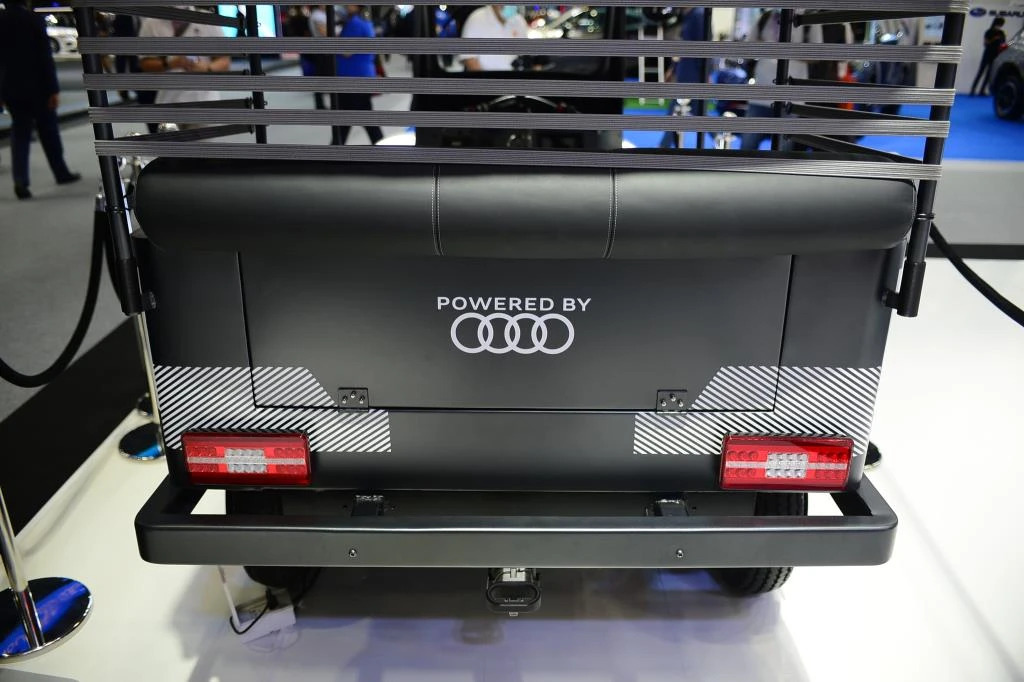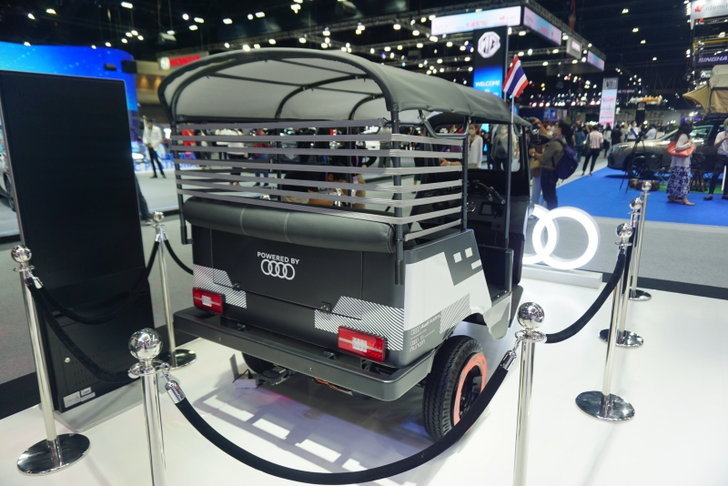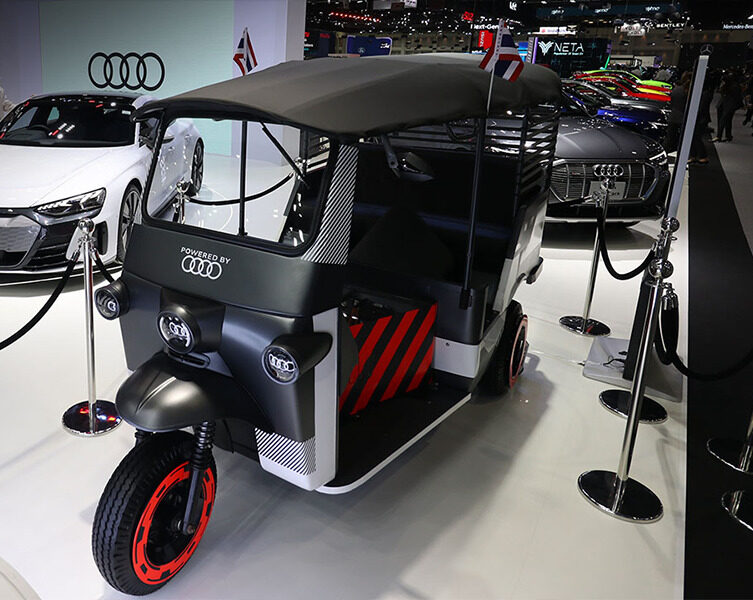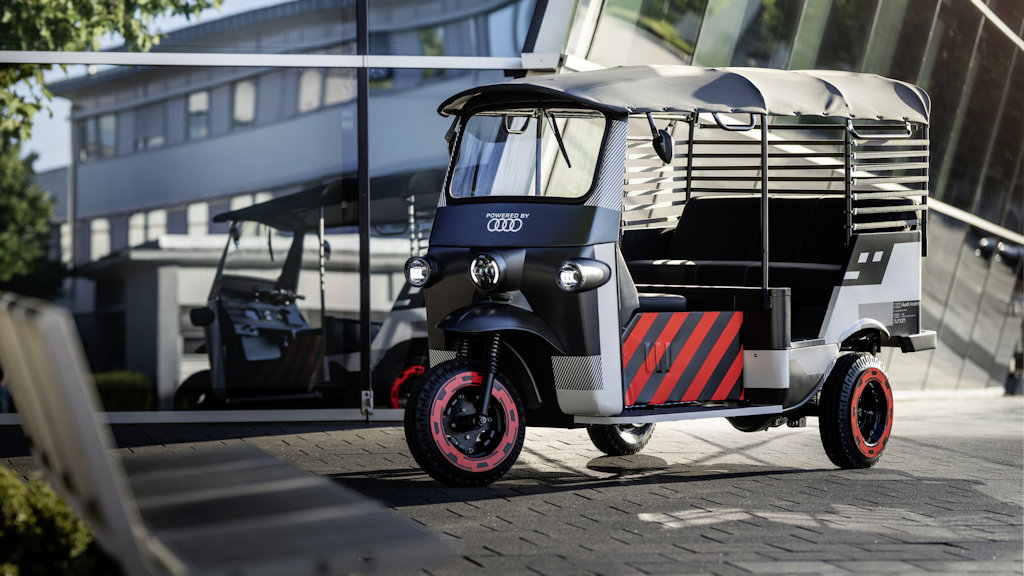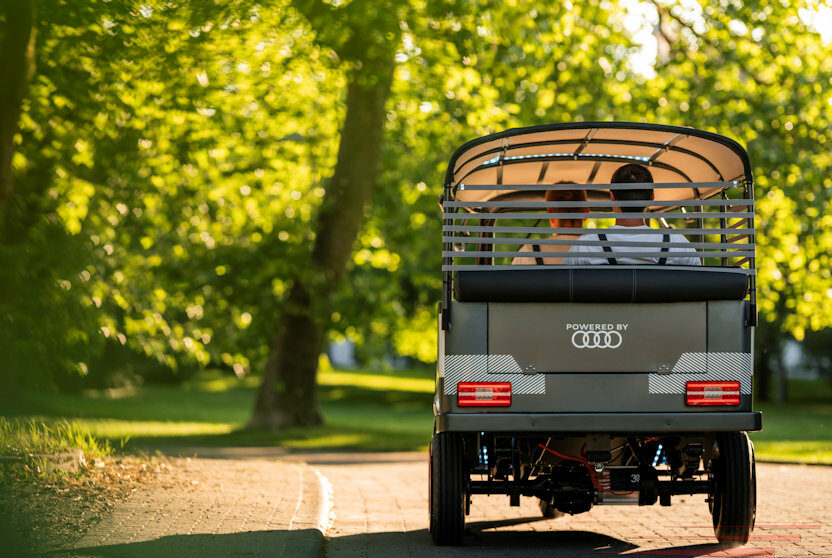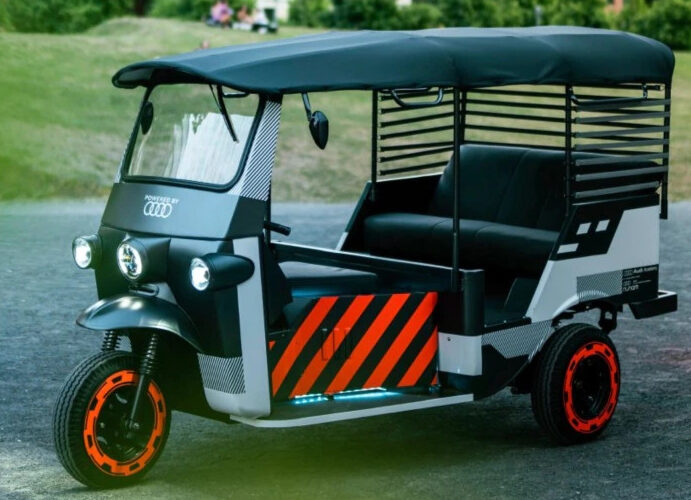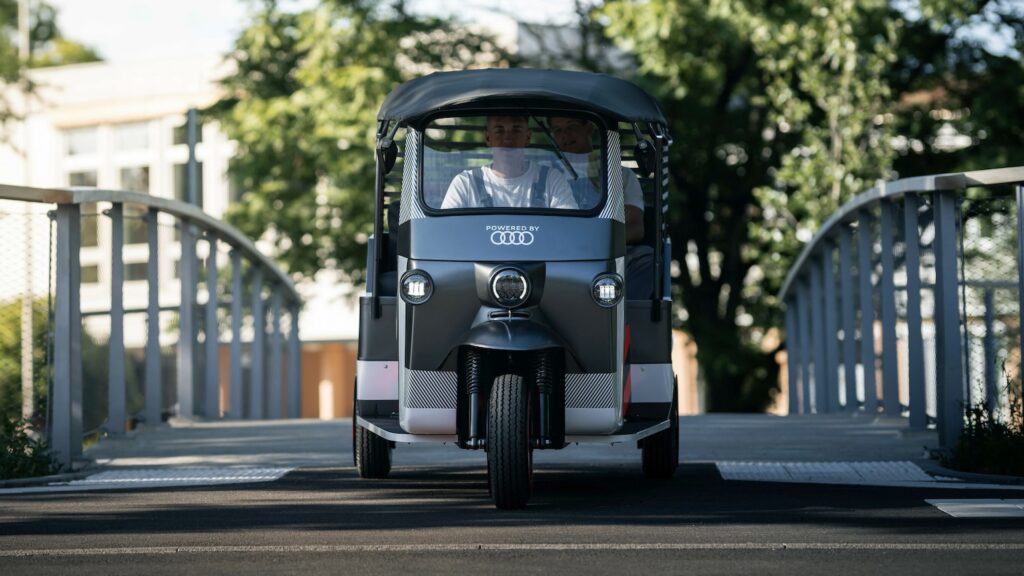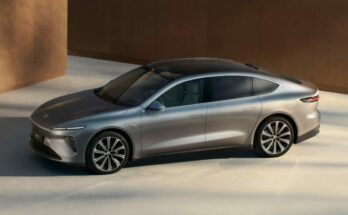Rickshaws are a popular mode of commercial transportation in the South Asian and Southeast Asian regions. And as time progresses, we have already seen electric versions of these rickshaws beginning to appear in various markets. But probably you might have never seen a rickshaw that’s powered by the German premium car brand Audi.
Actually, as carmakers shift to electric mobility, the issue of what to do with all those EV batteries is becoming a serious point of discussion. Audi together with a German-Indian start-up is finding a second life for the e-tron’s batteries to be used for zero-emissions rickshaws.
Related: 3-Wheel Loaders Eating Share of Suzuki Ravi?
Nunam, a non-profit start-up based in Berlin and Bangalore has successfully completed three-wheels electric rickshaws powered by the e-tron’s high-voltage batteries. These electric rickshaws were also displayed at Audi’s booth at the Thai Motor Expo.
e-rickshaw displayed at Audi’s booth at the Thai Motor Expo
Even though EV tractive batteries are made to last as long as the automobile, some of them last longer than the car they were originally installed in. Nunam, therefore, saw a chance, especially for cars with lower range and power requirements. For the rickshaws, Audi and Nunam focused on design, charging time, and range. These splash-proof, underfloor-mounted batteries are a hallmark of these zero-emission rickshaws. Also, they make use of as many recyclable materials as they can.
Related: Wuling Unveils a Single-Seat EV Pickup in China
With a high-energy-density battery and comparatively low vehicle weight, the Audi-powered e-rickshaws have an edge over conventional electric rickshaws which usually run on lead-acid batteries– have a relatively short service life, and are often not disposed of properly.
Audi-powered e-rickshaw
To complete the clean energy cycle, their e-rickshaws will be charged using power from solar charging stations. During the day, sunlight charges a battery sourced from an e-tron battery which acts as a buffer storage unit. And in the evening, the power is passed on to the rickshaws. This approach will make local driving largely carbon-free.

A computer animation professional with over 23 years of industry experience having served in leading organizations, TV channels & production facilities in Pakistan. An avid car enthusiast and petrolhead with an affection to deliver quality content to help shape opinions. Formerly written for PakWheels as well as major publications including Dawn. Founder of CarSpiritPK.com

